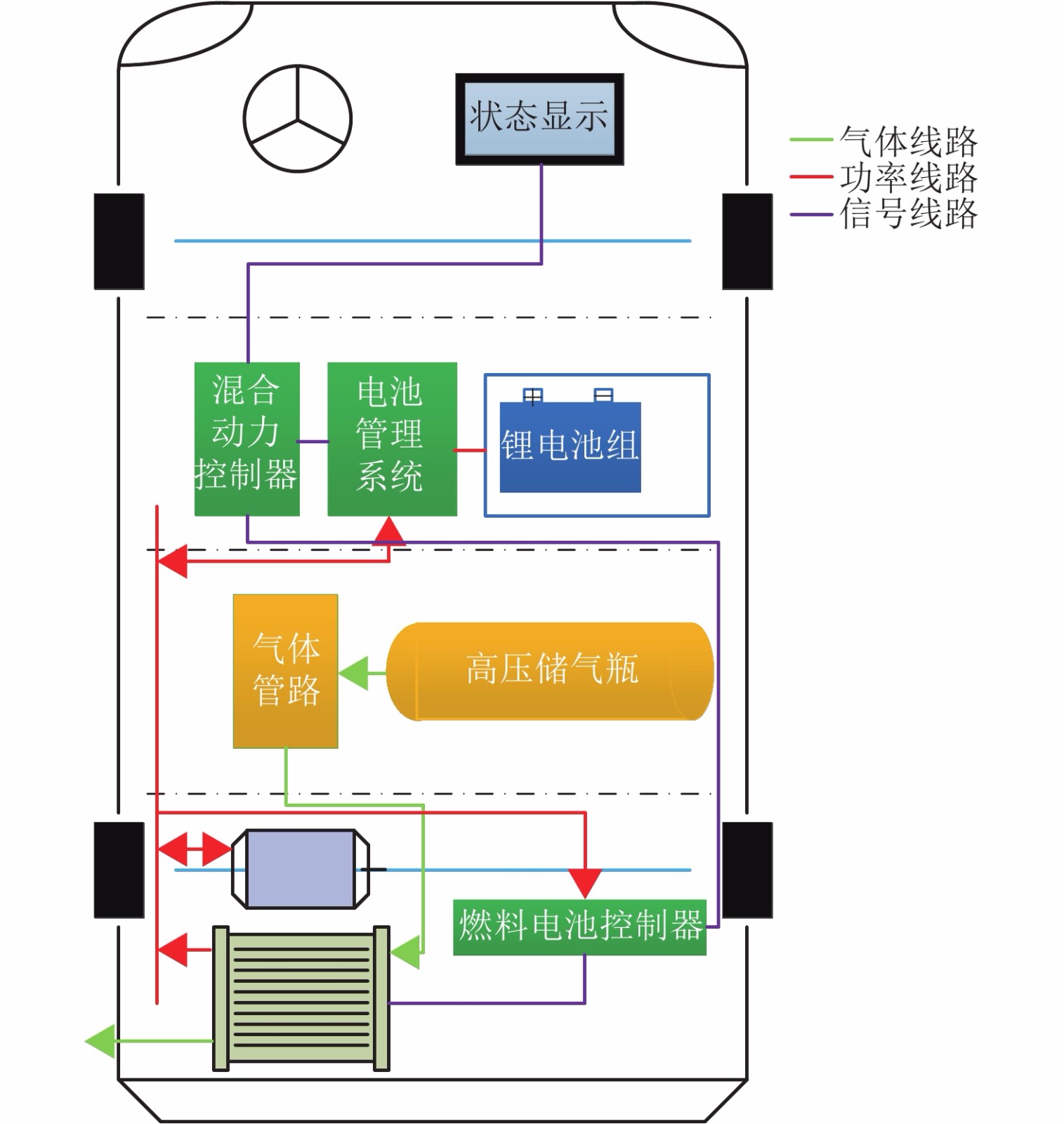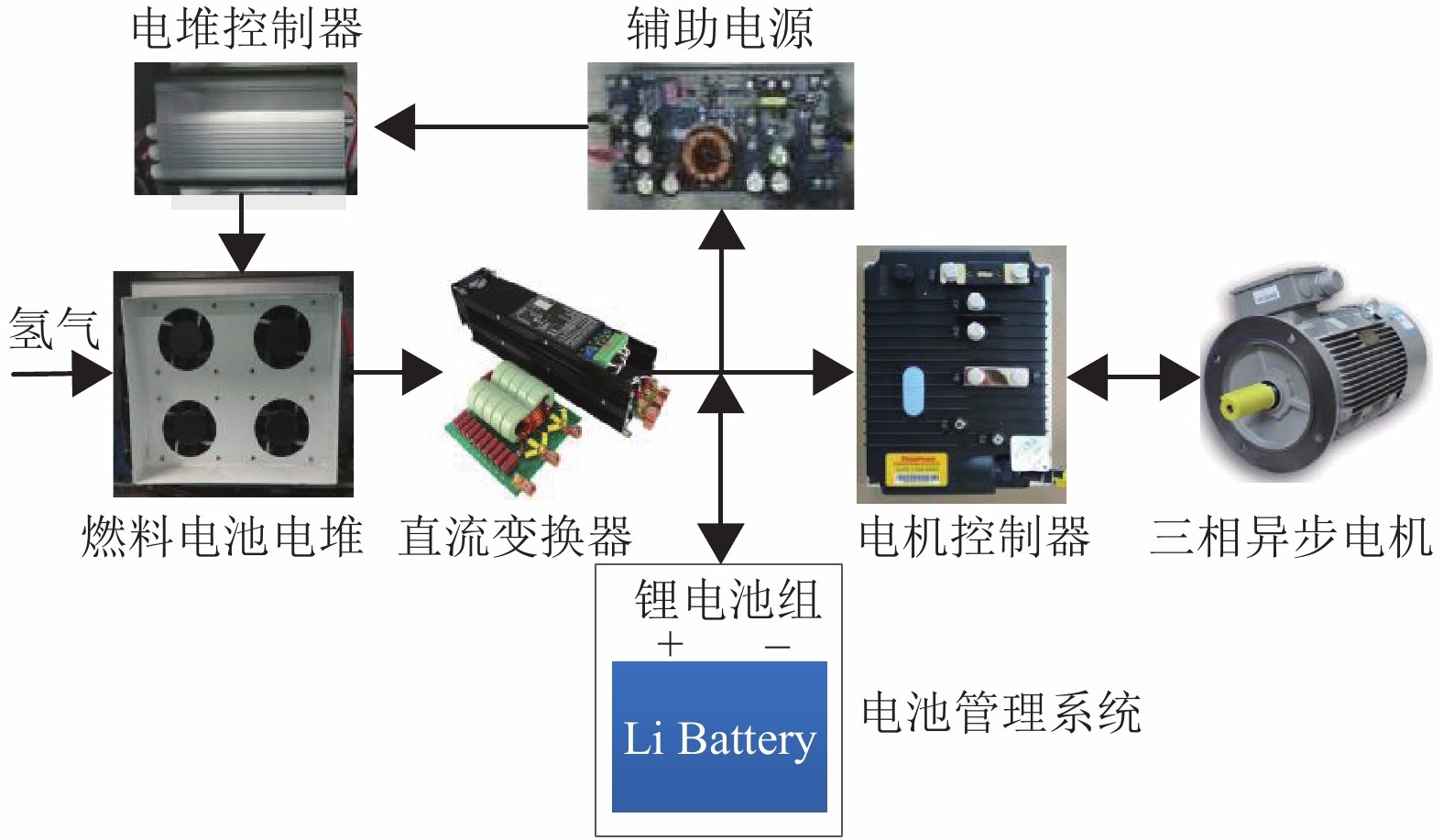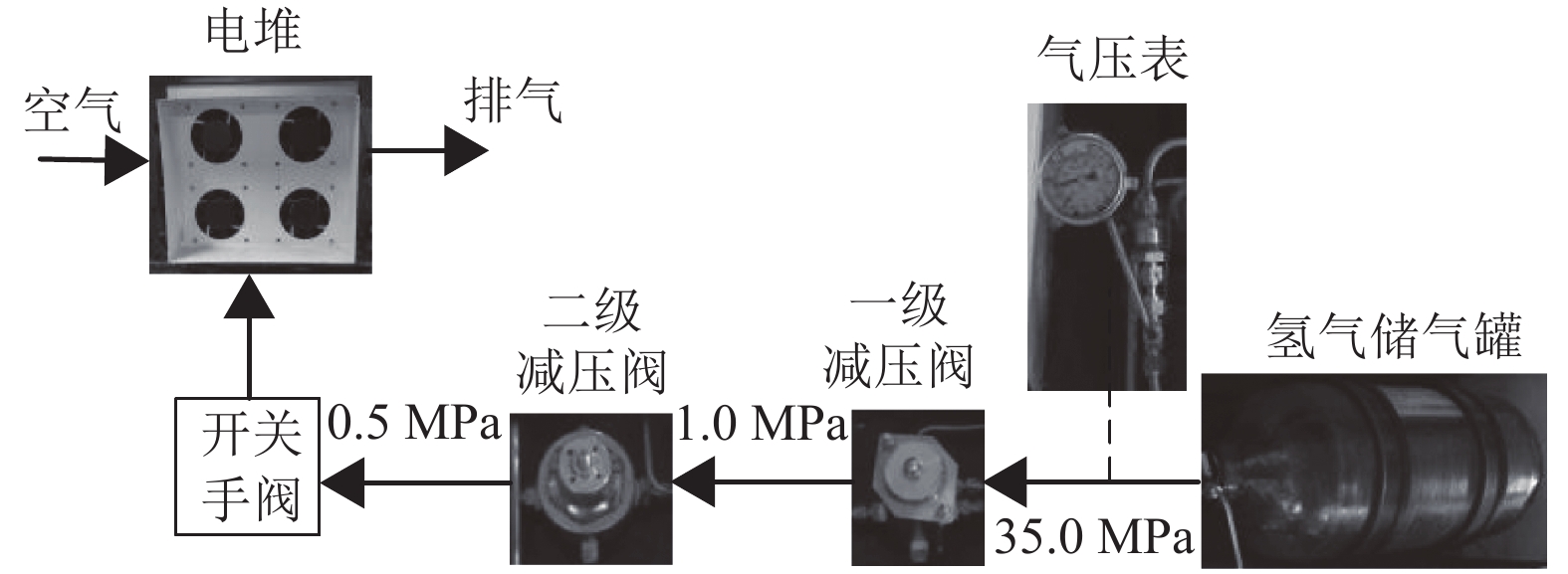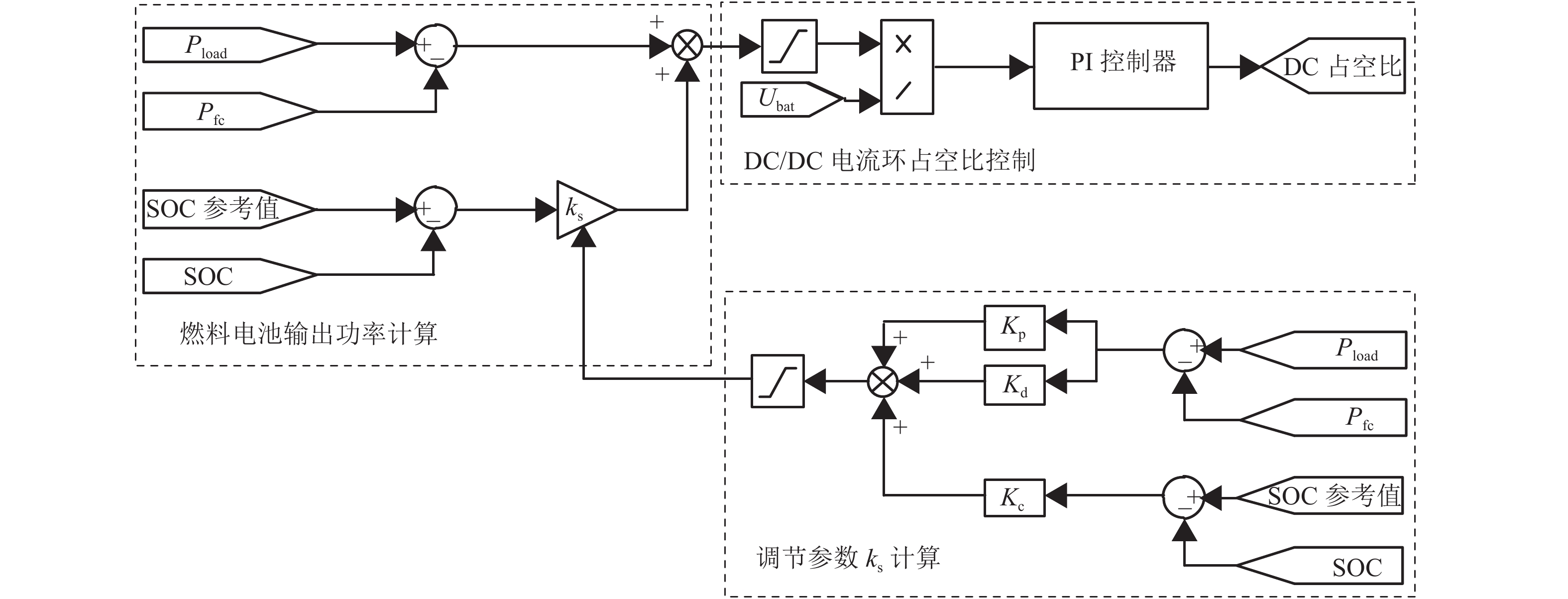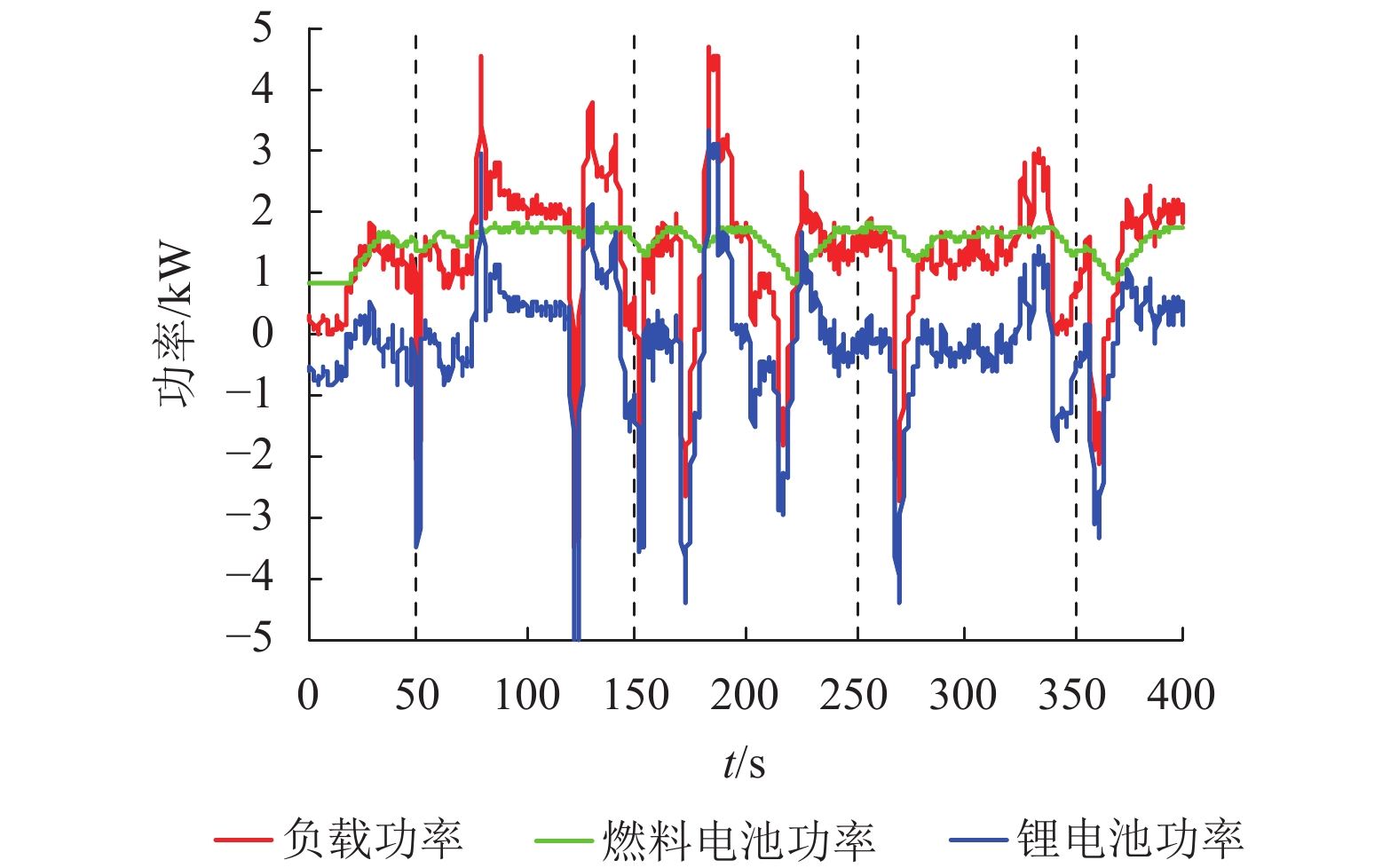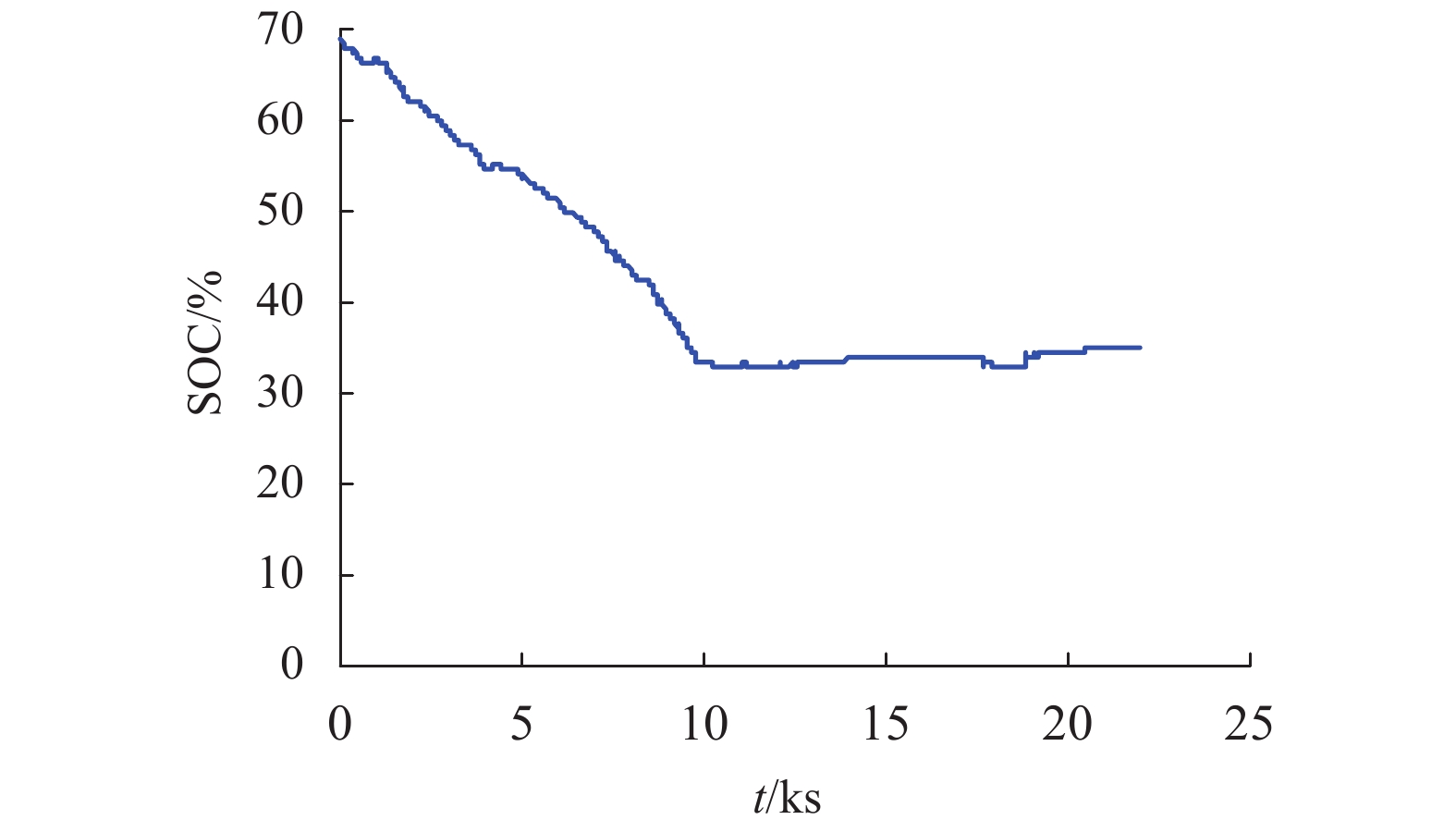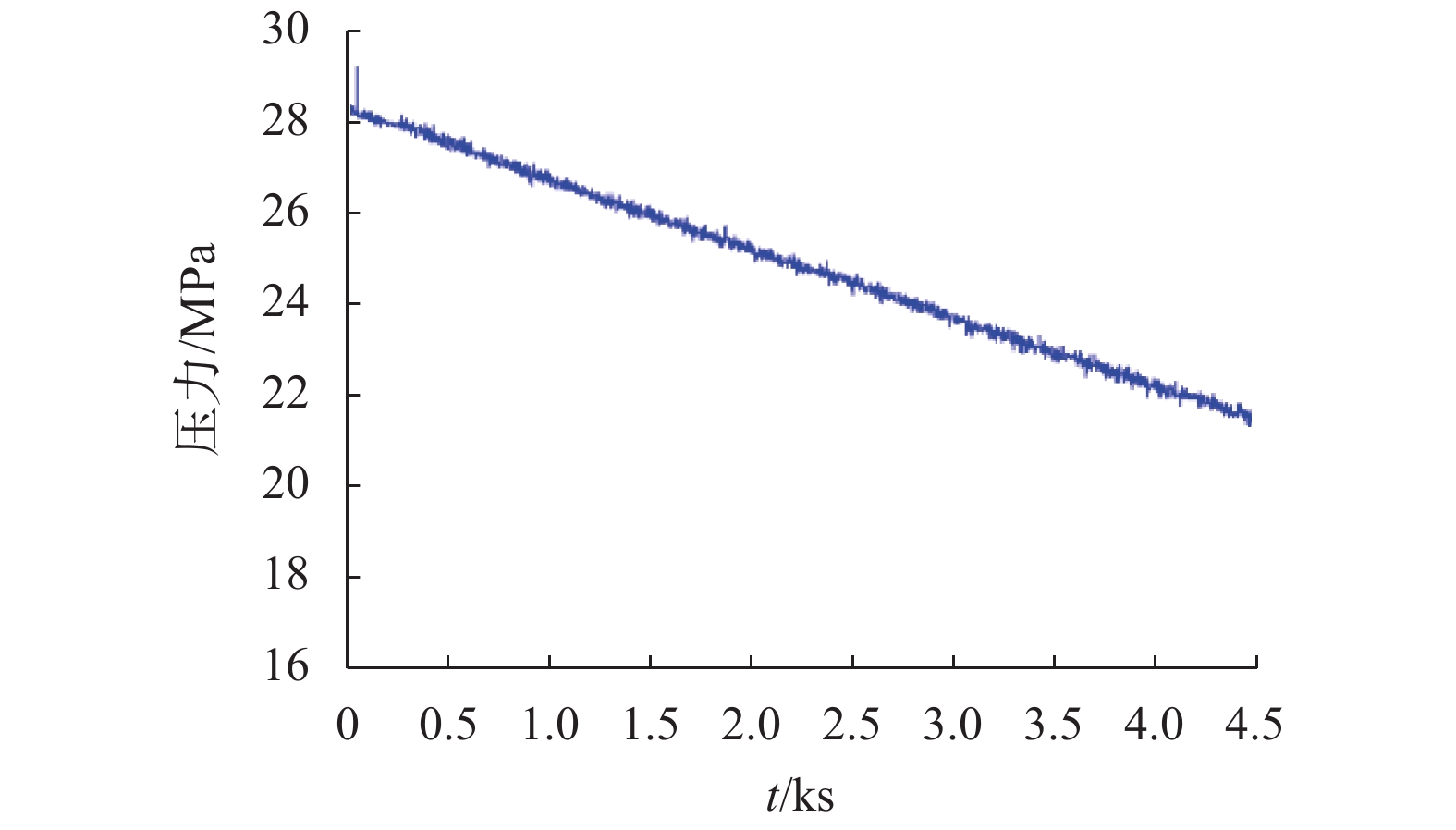Power Following Control Strategy of SOC Dynamic Adjustment for Small Fuel-Cell Cars
-
摘要: 针对风冷型质子交换膜燃料电池与锂电池组成的小型车用混合动力系统,提出一种根据SOC (state of charge)动态调节功率跟随系数的能量管理方法,完成混合动力观光车样车研制. 对构成样车的混合动力系统、氢气储存供给系统、信号控制系统3部分进行了详细阐述,并对不同工况下功率跟随算法调节系数对控制效果的影响进行了分析;采用动态改变调节系数降低功率跟随算法控制引起的锂电池SOC及燃料电池输出功率波动,延长电堆使用寿命;通过样车实际运行测试,验证混合动力控制方法的有效性. 测试结果表明:运行过程中燃料电池平均工作效率达到48.15%,并推算理论最大续航里程为94 km,与实际运行结果吻合.Abstract: An SOC (state of charge)-based energy management method is proposed to dynamically adjust the power following coefficient for the small-vehicle hybrid system that consists of an air-cooled proton exchange membrane fuel cell and a lithium battery. Moreover, a hybrid sightseeing car prototype is developed. Three parts of the prototype vehicle are illustrated, i.e., the hybrid power system, hydrogen storage supply system, and signal control system. How the coefficient of the power following algorithm affects the control under different operating conditions is analyzed. By dynamically adjusting the coefficient, the SOC deviation of the lithium battery and output power fluctuation of the fuel cell in the operation of the power following algorithm is alleviated and the service life of the stack is prolonged. Through the actual running tests on the prototype vehicle, the control method was verified. The average operating efficiency of the fuel cell in operation reached 48.15%, and the theoretical maximum cruising range was 94 km, which is consistent with the practice.
-
表 1 车辆运行参数
Table 1. Vehicle operating parameters
性能指标 数值 性能指标 数值 最高运行速度/(km•h−1) 30 锂电池额定电压/V 58.5 最大载客量/人 12 锂电池额定容量/(A•h) 200 最大续航里程/km 150 氢气储气罐压力/MPa 35 动力电机功率/kW 5 氢气储气罐容量/L 28 燃料电池电堆功率/kW 3 最大爬行坡度/(°) 15 动力母线电压/V 60 表 2 功率跟随参数
Table 2. Power following parameters
参数名称 数值 参数名称 数值 母线电压/V 60 SOC上限/% 50 标准充电功率/kW 1 SOC下限/% 20 电机额定功率/kW 5 SOC参考/% 35 表 3 不同策略效率及氢耗对比
Table 3. Comparison of efficiency and hydrogen consumption for different strategies
控制策略 燃料电池
效率/%氢耗/
(g•km−1)调节系数恒定为 0.50 功率跟随 46.79 7.7 动态调节系数功率跟随 48.15 7.5 -
陈维荣,胡斌彬,李奇,等. 基于动态规划的混合动力有轨电车能量管理方法[J]. 西南交通大学学报,2020,55(5): 903-911.CHEN Weirong, HU Binbin, LI Qi, et al. Energy management method for hybrid electric tram based on dynamic programming algorithm[J]. Journal of Southwest Jiaotong University, 2020, 55(5): 903-911. 陈维荣, 燕雨, 李奇. 基于状态机的燃料电池混合动力系统控制策略[J]. 西南交通大学学报, 2019, 54(4): 663-670.CHENG Weirong, YAN Yu, LI Qi. Control strategy based on state machine for fuel cell hybrid power system[J]. Journal of Southwest Jiaotong University, 2019, 54(4): 663-670. 刘楠, 于博轩, 郭爱, 等. 燃料电池混合动力的功率跟随管理策略分析[J]. 西南交通大学学报, 2020, 55(6): 1147-1154.LIU Nan, YU Boxuan, GUO Ai, et al. Analysis of power tracking management strategy for fuel cell hyrid system[J]. Journal of Southwest Jiaotong University, 2020, 55(6): 1147-1154. 徐梁飞,华剑锋,包磊,等. 燃料电池混合动力客车等效氢耗优化策略[J]. 中国公路学报,2009,22(1): 104-108. doi: 10.3321/j.issn:1001-7372.2009.01.017HUA Jianfeng, BAO Lei, LI Jianqiu, et al. Optimized strategy on equivalent hydrogen consumption for fuel cell hybrid electric bus[J]. China Journal of Highway and Transport, 2009, 22(1): 104-108. doi: 10.3321/j.issn:1001-7372.2009.01.017 赵荣海,王军政. 基于模糊控制的燃料电池混合动力系统能量管理研究[J]. 上海汽车,2018(2): 3-8. doi: 10.3969/j.issn.1007-4554.2018.02.01ZHAO Ronghai, WANG Junzheng. Research of energy management of fuel cell hybrid powertrain system based on fuzzy control[J]. Shanghai Auto, 2018(2): 3-8. doi: 10.3969/j.issn.1007-4554.2018.02.01 王哲, 谢怡, 臧鹏飞, 等. 基于极小值原理的燃料电池客车能量管理策略[J]. 吉林大学学报(工学版), 2020, 50(1): 36-43.WANG Zhe, XIE Yi, ZHANG Pengfei, et al. Energy management strategy of fuel cell bus based on pontryagin's minimum principle[J]. Journal of Jilin University (Engineering and Technology Edition), 2020, 50(1): 36-43. 徐陈锋. 基于自适应模糊策略的燃料电池车混合动力系统控制[D]. 杭州: 浙江大学, 2017. 张国瑞,李奇,韩莹,等. 基于运行模式和动态混合度的燃料电池混合动力有轨电车等效氢耗最小化能量管理方法研究[J]. 中国电机工程学报,2018,38(23): 6905-6914,7124.ZHANG Guorui, LI Qi, HAN Ying, et al. Study on equivalent consumption minimization strategy based on operation mode and DDOH for fuel cell hybrid Tramway[J]. Proceedings of the CSEE, 2018, 38(23): 6905-6914,7124. 陈维荣,刘嘉蔚,李奇,等. 质子交换膜燃料电池故障诊断方法综述及展望[J]. 中国电机工程学报,2017,37(16): 4712-4721.CHEN Weirong, LIU Jiawei, LI Qi, et al. Review and prospect of fault diagnosis methods for proton exchange membrane fuel cell[J]. Proceedings of the CSEE, 2017, 37(16): 4712-4721. 陈会翠,裴普成. 车用质子交换膜燃料电池经济寿命的研究[J]. 汽车工程,2015,37(9): 998-1004. doi: 10.3969/j.issn.1000-680X.2015.09.003CHEN Huicui, PEI Pucheng. A study on the economical lifetime of the prton exchange membrane fuel cell for vehicles[J]. Automotive Engineering, 2015, 37(9): 998-1004. doi: 10.3969/j.issn.1000-680X.2015.09.003 LI Qi, WANG Tianhong, DAI Chaohua, et al. Power management strategy based on adaptive droop control for a fuel cell-battery-supercapacitor hybrid tramway[J]. IEEE Transactions on Vehicular Technology, 2018, 67(7): 5658-5670. doi: 10.1109/TVT.2017.2715178 XU L, LI J, HUA J, et al. Adaptive supervisory control strategy of a fuel cell/battery-powered city bus[J]. Journal of Power Sources, 2009, 194(1): 360-368. doi: 10.1016/j.jpowsour.2009.04.074 陈会翠,裴普成. 质子交换膜(PEM)燃料电池变载过程动态模型[J]. 清华大学学报(自然科学版),2014,54(10): 1298-1303.CHEN Huicui, PEI Pucheng. Dynamic model of a proton exchange membrane (PEM) fuel cell during load changes[J]. Journal Publishing Center of Tsinghua University Press, 2014, 54(10): 1298-1303. 周定华, 付贝贝. 电动/混合动力汽车的CAN网络系统[J]. 电子技术与软件工程, 2018(22): 23-25.ZHOU Dinghua, FU Beibei. CAN network system of electric/hybrid vehicle[J]. Electronic Technology & Software Engineering, 2018(22): 23-25. 宋满存,裴普成. 停放对PEMFC性能特性的影响研究[J]. 汽车工程,2014,36(11): 1365-1368.SONG Mancun, PEI Pucheng. A study on the effects of shutdown on the performances of PPEMFC[J]. Automotive Engineering, 2014, 36(11): 1365-1368. 张友龙,袁文强,芮凯,等. 纯电动汽车动力电池技术研究[J]. 汽车实用技术,2018(17): 19-22.ZHANG Youlong, YUAN Wenqiang, RUI Kai, et al. Research on power battery technology of pure electric vehicle[J]. Utomobile Technology, 2018(17): 19-22. -




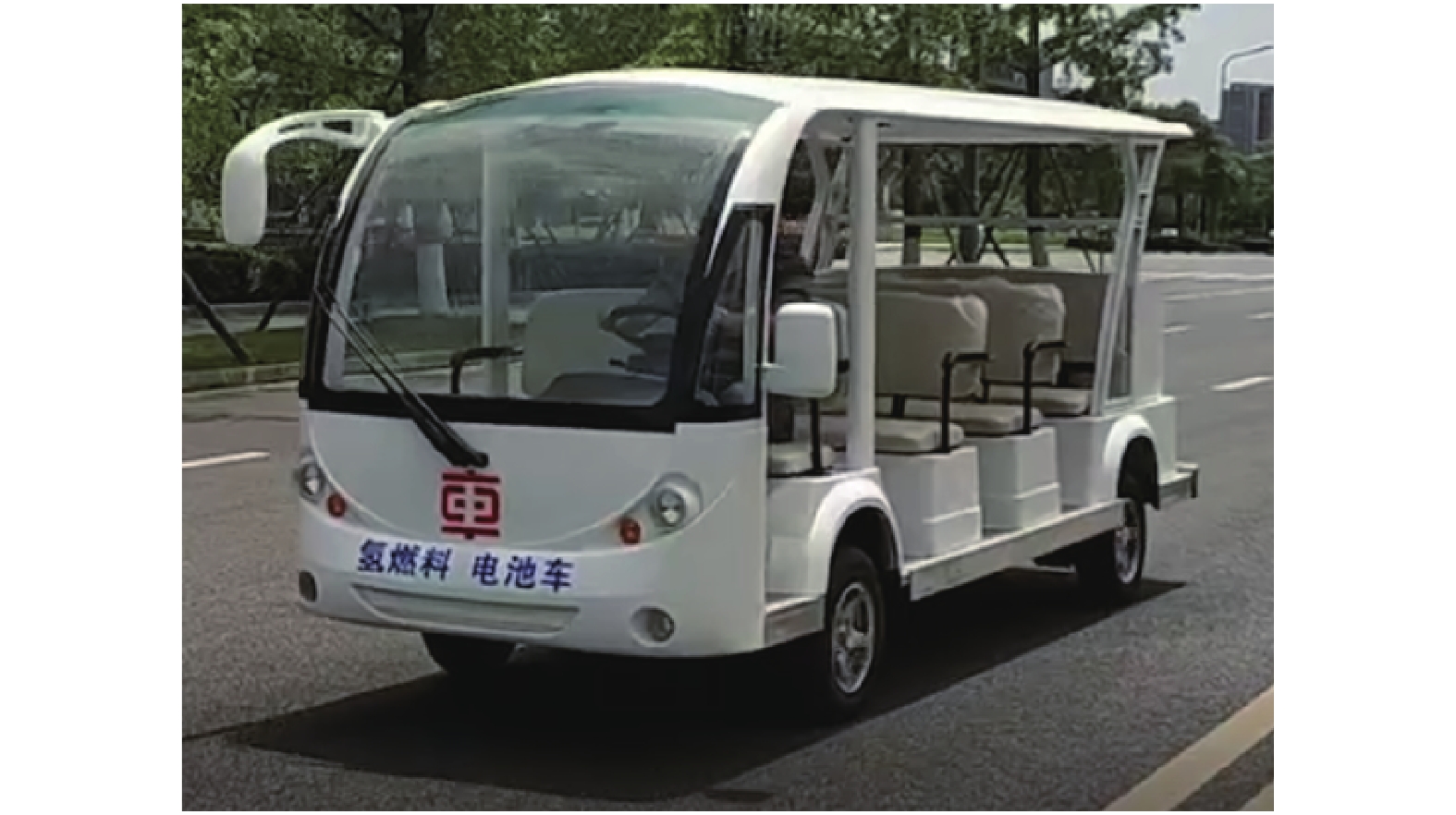
 下载:
下载:
